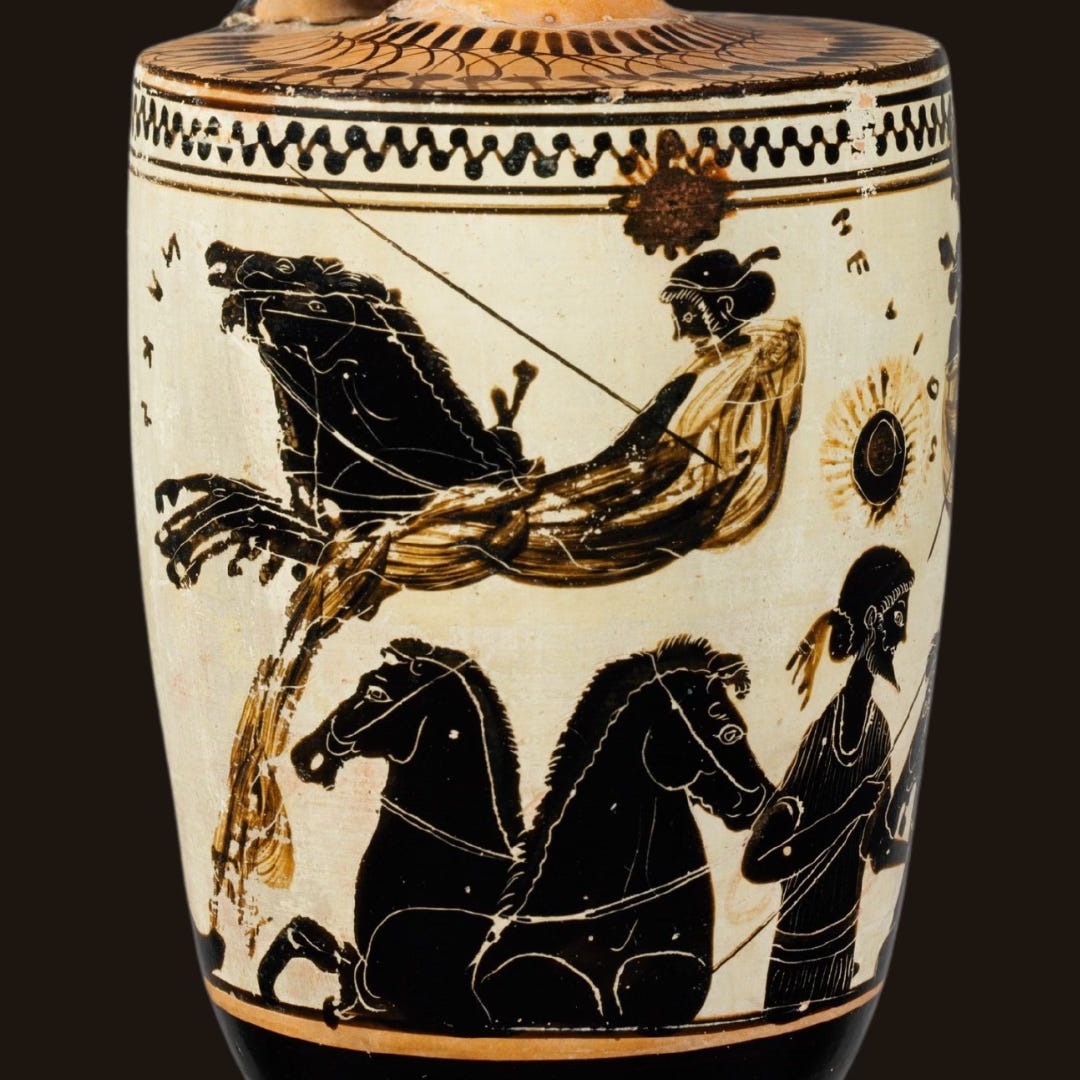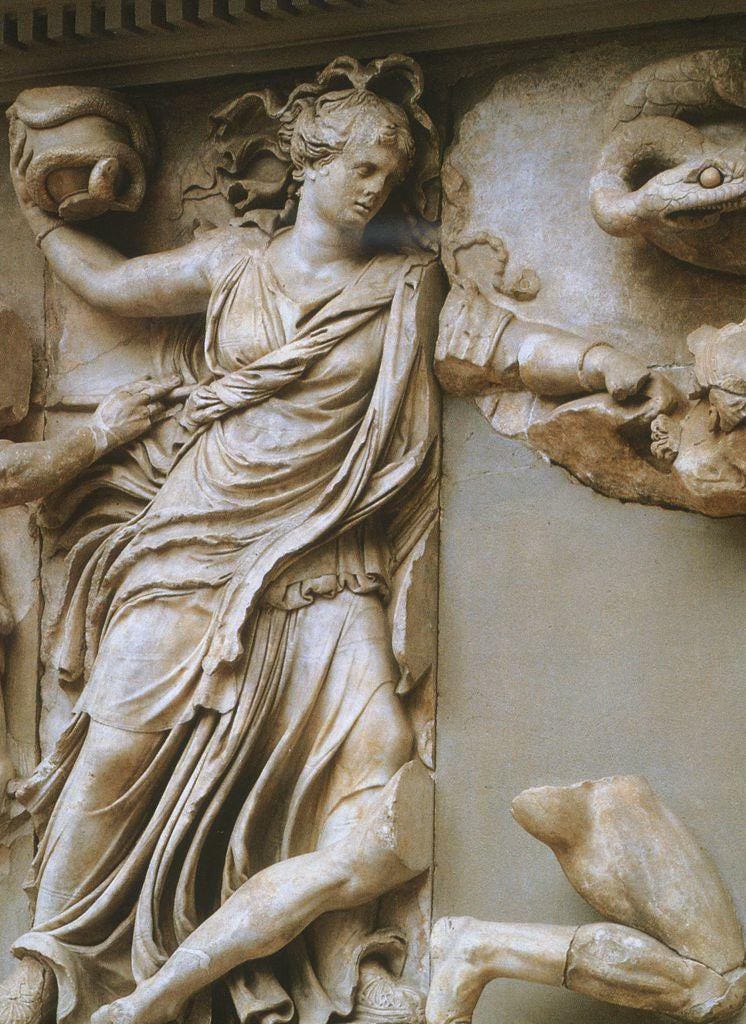A New Translation of the Orphic Hymn of Nyx (Night)
As the Solstice approaches, the Orphics offer us a GORGEOUS and UPLIFTING "take" on darkness and Night

This written introduction to my new translation will be short, because my ability to write essays has been curtailed by the fogginess of my Long Covid brain. However, I’ll be speaking about Nyx (Night) in this weekend’s Live Chat on Saturday, Dec 14th at 2pm EST. So if what follows intrigues you, tune in then for a fuller discussion. (Full info and link for that here.)
In the meantime, here is a bullet-point list of some key things to look out for in the translation:
Notice that for the Orphics, Nyx IS Aphrodite (aka “Cypris”). Related to this is the idea, found in the hymn, that Night is “the All” longing for itself.
Her special relationship to Dream (Oneiros) and healing, especially Her ability to ward off Night terrors
Her embrace of both the chthonic/heavenly, which is related to her particular place in the Orphic cosmos (more on this in the Live Chat)
Her relationship with the somewhat mysterious beings called “air-wanderers” (again, we’ll discuss this further in the Live Chat)
Her relationship with horses! (Which is not simply a mythological trope, but conveys important astronomical information.)
Nota Bene for those of you who follow Orphic cosmology closely: you’ll notice that for the author(s) of the Orphic Hymns, Nyx is truly primordial. She comes BEFORE the creation of Heaven, Protogonos, etc., as opposed to some later Orphic traditions that have Nyx as the child of Protogonos. Scholars call these two variations the “Eudemian” vs. the “Rhapsodic” theogonies, where the Eudemian represents an earlier Orphic tradition, and the Rhapsodic represents a significantly later variant. The fact that the Eudemian theogony is used by the Orphic Hymn author speaks to an early date for the hymns, not least because it is acknowledged by most scholars that the Eudemian version is highly dependent on/derivative of much more ancient Egyptian theogonies. If folks are interested in unpacking these differences a little further, bring your questions and thoughts to the Live Chat!
And now, without further ado, here is the Hymn of Nyx to add some “Night-gleaming” luster to your solstice evenings.
✨✨Kristin





